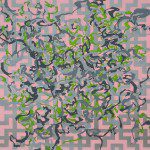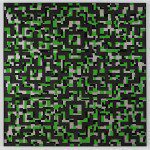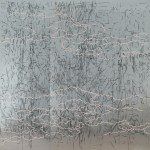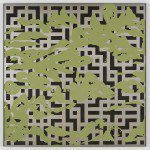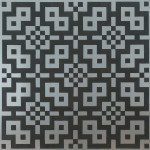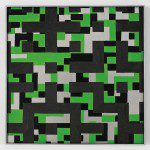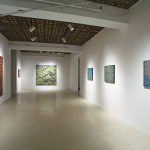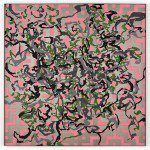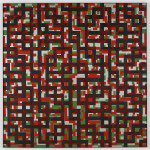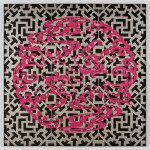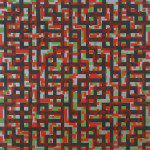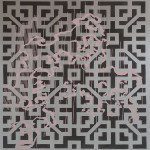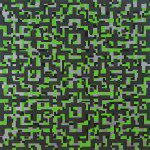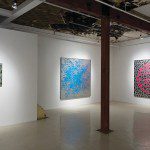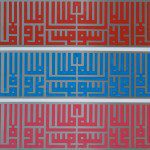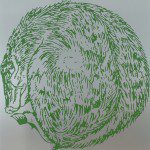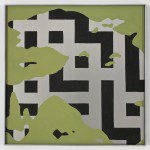Jinny Yu: Story of a Global Nomad
Text by Michael Rattray
Nomadism is an abstract. It describes a freedom to potentially be anywhere at anytime, to take from whatever can be taken, and to leave whenever to be somewhere anew. Consistently, the nomad has occupied an anthropological distortion, where the term was perhaps applied too loosely and vaguely. The process of colonial appropriation distorted known territorialities to the principles of the nomadic; that of the landless, those whom move at whimsy, seemingly without place. While in the real, those who seemed to be without place were in fact patterned, their movements’ routine and contained within a perimeter defined through geographic constraint.
The new works of Jinny Yu echo notions of the nomadic, in both misconceptions and concrete understandings of the term. Deleuze and Guattari have commented that nomads can be localized within monads, acting as singular nomads “that entertain tactile relations among themselves. ” The nomadic monad, or module, offers a parallel to Yu’s earlier works and relates to the artist’s understanding of the artist as a migratory creature, one who has the ability to shift between contexts and identities within the “increasingly liquid field of trans-global relations. ”
Two visual systems preside over the majority of the new works. The systems are defined by an appropriated pattern occupying the underlay of the work, which appears to be static, while an appropriated overlay pattern juts out from the background, appearing to convolute, distort and haphazardly foray among the fluidity of the underlay. Each work, constructed with three sheets of aluminum occupying a space of six by six feet, built from a single set, or module, combine to make-up the finished piece. The works, while maintaining an appearance of fluid structure, upon closer inspection can be reduced to their singular parts, even down to an individual line of graphite. These monads that make up the greater whole, while at times appearing in a state that resembles something solid, can just as easily become anarchic, or nomadic in their associations to the greater field of view within the structure, as is evidenced by the repetitions contained within the work Multiple Trees.
An invocation of the problematic nature of assumption, or definition, within a master or universal narrative construct is evidenced through the works contained in Story of Global Nomad. Whether the appropriated sources are eastern in influence, western in construction, southern in flavor, or northerly contained they represent a systematic awareness of the patterns of our current predicament within a trans-global world. While we may be free to pursue nomadic states of wandering within a world of accessible consumption, the structures, the modules and the maps that we must navigate our freedom within nonetheless contain us. Nomadism may refer to an abstract, but it is an abstraction still dependent on a system to understand itself within, therefore no more outside, or inside, a place than another.
1. Deleuze, Gilles and Guattari, Felix. “The Smooth and the Striated.” A Thousand Plateaus: Capitalism and Schizophrenia. trans. Brian Massumi. Minneapolis: University of Minnesota Press, 1987 (80). pg.493.
2. Yu, Jinny. Mediation in Abstraction. Unpublished Paper. 2007. pg.5.


